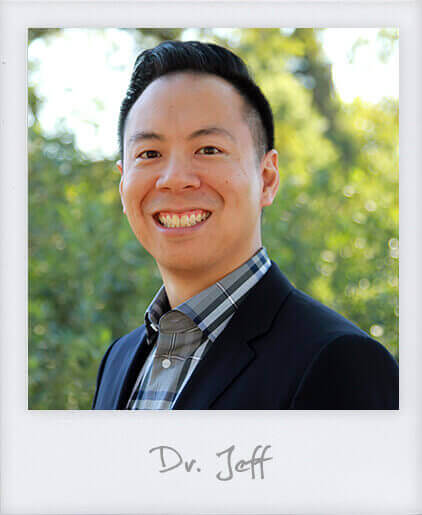
As the end of the year approaches, it’s the perfect time to review your dental benefits and Flexible Savings Account (FSA) or Health Spending Account (HSA) funds. Sometimes, people don’t realize that unused dental benefits and FSA funds expire at the end of the year, meaning you’re leaving money on the table if you don’t use them.
As for orthodontic coverage, the dental benefits don’t usually expire because treatment is often subject to a lifetime maximum. That said, there are things to keep in mind if you’re planning to change insurance during open enrollment.
To help you take full advantage of your benefits, here are some tips for making the most of your dental plan, what to consider during open enrollment, and how to use your FSA or HSA for orthodontics.
Want Orthodontic Benefits? Open Enrollment Starts November 1
Open enrollment for health and dental insurance runs from November 1, 2024 through January 15, 2025. If your new dental plan includes orthodontic benefits, now is the time to schedule a complimentary consultation at Jeffrey Kwong Orthodontics. This way, once your plan kicks in, you’ll be ready to hit the ground running with braces, InBrace®, or Spark™ Aligners.
When choosing a plan, be mindful of age restrictions and waiting periods. Some plans cover orthodontics until age 18 or 19. They can also have a waiting period. For example, the insurance may not pay for braces or clear aligners until you’ve had the policy for six months. If you were hoping to start treatment ASAP, then that particular plan might not be the best option.
What Does “Dental Insurance” Cover?
Before you can fully maximize your benefits, it’s important to understand how your dental insurance plan works. As you’ve probably experienced, dental insurance isn’t really insurance like medical insurance; it’s probably more accurately referred to as a dental benefit plan. Each plan is different, but most cover preventive care, such as dental cleanings, exams, and x-rays, at no extra cost.
Preventive care is the key to maintaining excellent oral health, which is especially important during orthodontic treatment, so schedule these visits before the year ends.
For more extensive treatments like fillings and crowns, your dental insurance likely covers a percentage of the cost. Be sure to check your plan’s specifics to see if your benefits apply and whether or not you’ve met the deductible.
Does Your Dental Benefit Plan Cover Braces or Clear Aligners?
While it depends on your plan, many dental insurances do cover some of the cost of braces or clear aligners. Again, you’ll want to check with your insurance provider. Having orthodontic coverage can significantly reduce your out-of-pocket treatment costs.
What Does Annual Maximum Mean for Dental Insurance?
Your dental insurance’s annual maximum is the most your plan will pay out for covered treatments each year. If you don’t use your full benefits by the end of the year, those funds are lost — they do not carry over. That’s why you’ll want to schedule any pending treatments before December 31.
What Does Lifetime Maximum Mean for Orthodontic Treatment?
A lifetime maximum is not the same as an annual maximum. The lifetime maximum, which commonly applies to treatments like orthodontics, is the maximum amount your plan will ever pay toward the cost of the service.
For example, if your plan says you have a $1,500 lifetime maximum for orthodontics, the insurer will cover up to $1,500 of the cost of orthodontic care (at a percentage that they designate). Once you reach $1,500, they won’t pay out anything else, even when your benefits reset at the start of the year.
What if I Already Started Orthodontic Treatment But Want to Change Insurers?
If you’ll be taking advantage of open enrollment to get a new dental insurance plan, that can impact ongoing orthodontic treatment. Look for a “treatment in progress”, “work in progress,” or “orthodontics in progress” feature when choosing a plan. This will ensure that your new plan will continue to pay out what remains of your lifetime orthodontic benefit.
When Does Dental Insurance Reset?
In most cases, dental insurance plans reset on January 1. That means your annual maximum, deductible, and benefits start fresh for the new year. If you don’t use your remaining benefits before December 31, they expire, and you’ll miss out on potential savings.
The lifetime maximum, such as in the case of orthodontic treatment, doesn’t reset. This amount rolls over each year until you use it up.
Can You Use Your FSA/HSA for Orthodontics?
Yes! While you should always check with your plan, most of the time you can use your FSA or HSA for orthodontics, including braces, InBrace, and Spark Aligners. Since many FSAs follow a “use it or lose it” policy, it’s important to use these funds before the end of the calendar year to avoid forfeiting them. HSAs, on the other hand, typically roll over.
To use your HSA for orthodontics, you can pay with your HSA debit card. You can also use personal funds and submit a claim for reimbursement through your plan’s administrator.
To use your FSA for orthodontics, you’ll pay for treatment upfront and submit a claim through your employer. Usually, you’ll need to provide proof of the expense and the explanation of benefits (EOB) from your insurance company that shows what portion of treatment isn’t covered by insurance.
In any case, remember to save your receipt and insurance statements. My team is always happy to provide you with any necessary documents.
Maximize Your Year-End Benefits
Now that you have a better understanding of your dental insurance plan and how to use your HSA/FSA for orthodontics, here are some actionable steps you can take to maximize your benefits before the year ends:
- Schedule Preventive Care: If you haven’t had your second cleaning and exam of the year, book it now. Preventive care is typically covered 100% by insurance.
- Use Your FSA Funds: Check your remaining FSA balance and use the funds for qualifying orthodontic care before they expire.
- Book an Orthodontic Consultation to Plan for Next Year: If you’ll need orthodontic treatment in the new year, plan ahead by scheduling a consultation now. Dr. Jeff will provide you with a personalized treatment plan and cost breakdown to help you maximize your new benefits when they reset in January.
Get a Healthy, Beautiful Smile Without Breaking the Bank
At Jeffrey Kwong Orthodontics, we accept most insurance plans. We’ll even help you determine your orthodontic coverage and file claims on your behalf.
Don’t have dental insurance or orthodontic benefits? No problem! In an effort to make orthodontic treatment affordable for everyone, we offer paid-in-full and family discounts, as well as in-office, 0%-interest financing plans.
Ready to get started? Schedule a complimentary consultation at our El Dorado Hills orthodontic office today!

